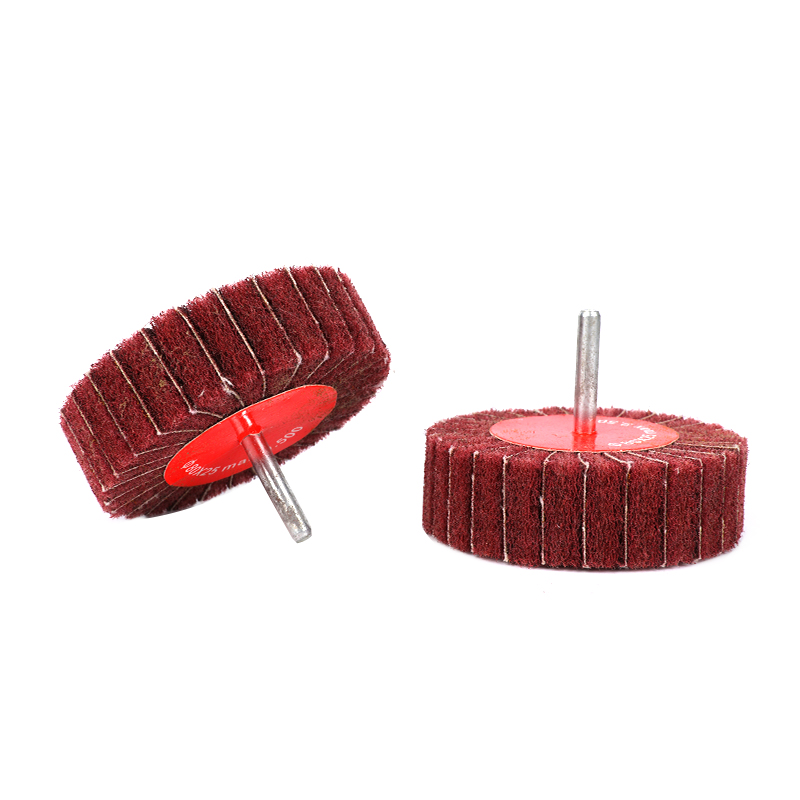Working principle and application of grinding wheel.
 2024.08.19
2024.08.19
 News
News
The grinding wheel, as a common grinding tool in industrial production, has garnered significant attention due to its effectiveness in various applications.
It consists primarily of abrasive grains, binders, and pores. The abrasive grains are crucial for the grinding process, as they determine the wheel's cutting efficiency and surface finish. These grains are typically made from materials such as aluminum oxide or silicon carbide, each selected based on the material being machined.
The binders, which can be made from resin, vitrified materials, or rubber, hold the abrasive grains together and provide the wheel with its shape and stability. The pores in the wheel allow for the passage of air and coolant, facilitating the grinding process and helping to dissipate heat generated during operation.
When a grinding wheel rotates, the abrasive grains come into contact with the workpiece. The grinding action occurs through a combination of shearing, cutting, and friction. As the grains engage the surface of the workpiece, they remove material in small chips. This material removal is influenced by factors such as the wheel's speed, the feed rate, and the depth of cut.
The grinding process can be categorized into several types, including surface grinding, cylindrical grinding, and tool grinding. Each type requires specific wheel designs and characteristics tailored to the intended application. For instance, surface grinding wheels are typically flat and wide, while cylindrical grinding wheels are narrower and shaped to fit the contours of the workpiece.
Grinding wheels are versatile tools utilized across various industries, including manufacturing, automotive, aerospace, and metalworking.
Manufacturing: In the manufacturing sector, grinding wheels are employed for precision machining processes. They are essential for producing high-quality surface finishes on components such as gears, shafts, and housings. The ability to achieve tight tolerances makes grinding wheels invaluable for maintaining the integrity of finished products.
Automotive Industry: The automotive industry relies heavily on grinding wheels for various applications, including engine component finishing and brake disc machining. The precision and efficiency offered by grinding wheels help improve the performance and durability of automotive parts, contributing to overall vehicle reliability.
Aerospace Industry: In aerospace manufacturing, where weight and strength are critical, grinding wheels are used for machining lightweight materials such as titanium and composites. The grinding process is essential for creating complex shapes and maintaining strict quality standards required in aerospace applications.
Metalworking: Grinding wheels are fundamental in metalworking for tasks like sharpening tools and finishing machined parts. They enhance the cutting edges of tools and provide the necessary surface finish for components that require precise dimensions.
To big the effectiveness of grinding wheels, certain skills and good practices should be followed:
Selection of Grinding Wheels: Choosing the right wheel for a specific application is vital. Factors to consider include the type of material being machined, the desired surface finish, and the grinding method.
Proper Wheel Dressing: Regular dressing of the grinding wheel is necessary to maintain its cutting ability. Dressing removes dull abrasive grains and creates a sharp edge, ensuring good performance during grinding.
Cooling Techniques: Implementing cooling techniques, such as using coolant or intermittent grinding, helps dissipate heat and reduces the risk of thermal damage to both the workpiece and the wheel.
Monitoring Wheel Wear: Keeping an eye on wheel wear is essential for maintaining precision. Regular inspection can prevent excessive wear and ensure consistent performance throughout the grinding process.
The grinding wheel is a critical tool in industrial production, with a well-defined working principle that underpins its various applications.

 Eng
Eng  عربى
عربى







